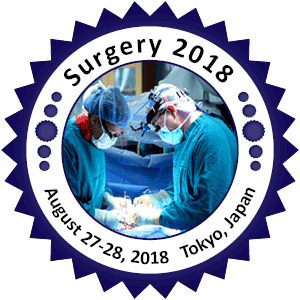
Maria Nicola
Semmelwis University, Faculty of Medicine, Budapest, Hungary
Title: The Importance of Sentinel Lymph Node Biopsy in Tumour Surgery
Biography
Biography: Maria Nicola
Abstract
The Sentinel Lymph Node Biopsy (SLNB) has become the standard of care for the detection of metastasis, staging and management of breast, head and neck, pelvic tumours and melanoma.This meta-analysis study proves the importance of the SLNB and the decreased morbidity with breast conserving surgery compared to Axillary Lymph Node Dissection (ALND).
From the trials included, advantages of the SLNB identified were decreased arm morbidity, decreased benefit from ALND due to earlier detection (Breast Conserving Surgery (BCS)+SLNB can be sufficient), the same Disease Free Survival (DFS) and Overall Survival (OS) between the ALND and SLNB groups, possibility of removing suspicious nodes that are not blue, cost minimising compared to ALND only group (ie. Radical/ total mastectomy). Disadvantages included False Negative Rates (FNR) of 5,1-7.3% which were affected by the number of mapping agents used and SLNs examined; False Positive Rates (FPR) of 14%; the technique is highly dependent on the surgeon’s technique; there are several contraindications to SLNB and Dye risks and lastly, the technique increases intra-operative time & cost compared to simple mastectomy or BCS alone.
The study emphasised the need to create a uniform protocol to decrease the variables in the trials; Materials used varied (Radio-colloid, blue dye or both), injection site, surgeon's experience, high/low risk patients as well as age and ethnicity. In order to decrease the FNR, the use of Dual Agent mapping is recommended and in clinically suspicious nodes or tumours larger than 3cm additional Axillary Sampling should be carried out.

